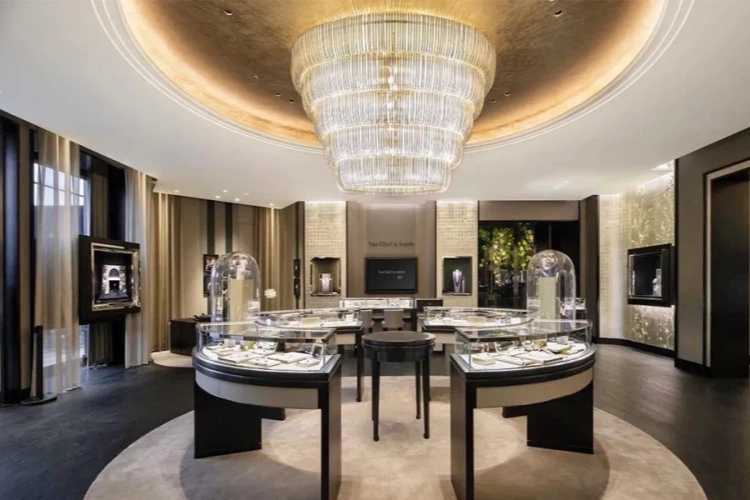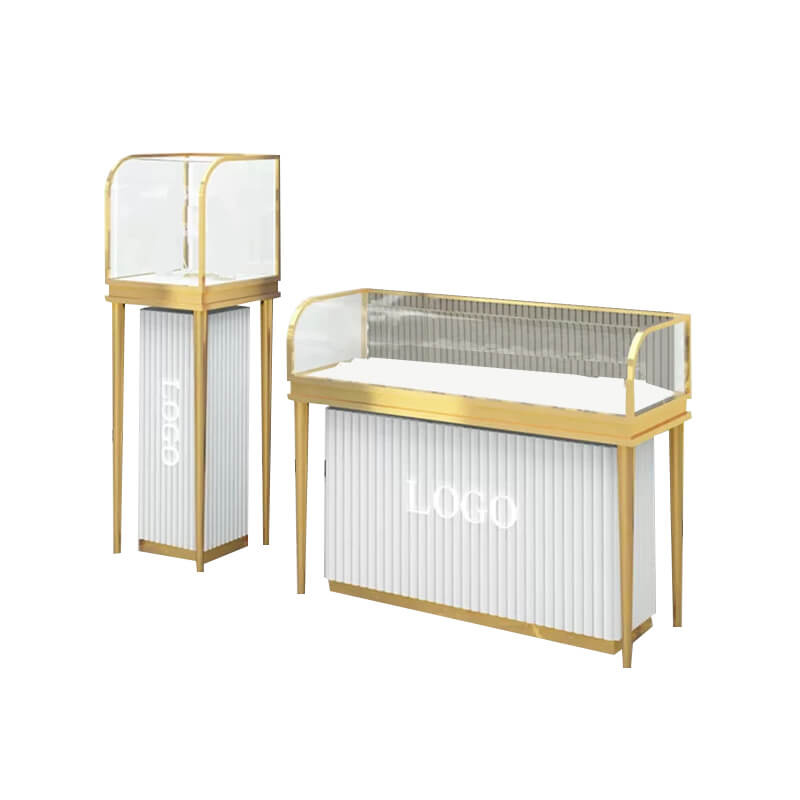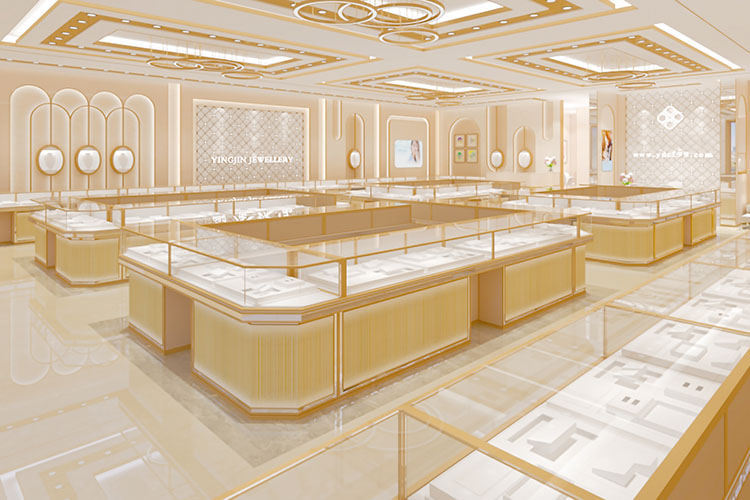Did you know that 73% of purchasing decisions are made at the point of display? Effective ideas for jewelry display can transform browsers into buyers within seconds.
However, many brands struggle to create displays that capture attention while showcasing their pieces’ unique craftsmanship. A cluttered or poorly lit display can make even exceptional jewelry appear ordinary, while a thoughtful arrangement elevates every piece.
In fact, the right display does more than just present your products—it tells your brand story, highlights your craftsmanship, and creates an emotional connection with potential customers. Whether you’re setting up a booth at a craft fair, designing a retail storefront, or creating product photography for your website, your display strategy matters tremendously.
Therefore, this step-by-step guide will walk you through creating stunning jewelry displays that not only showcase your pieces beautifully but also drive sales. Additionally, you’ll learn how to maintain and optimize your displays to keep customers engaged season after season.

Plan Your Jewelry Display Strategy
A successful jewelry display design begins with strategic planning. Before selecting materials or arranging pieces, you need a clear roadmap that aligns with your brand identity and business objectives.
Define your display goals
Your display strategy should start with specific, measurable goals. Research shows that over 60% of purchase decisions are influenced by how products are showcased. Begin by asking:
- What story do you want your display to tell?
- Are you highlighting new collections or signature pieces?
- Do you want to encourage interaction or create a sense of exclusivity?
One primary goal should be exposing as much inventory as possible while giving each piece the distinction it deserves. Consequently, avoid overcrowding your displays, as this diminishes perceived value. Instead, create focal points with proper lighting and prominent placement to immediately draw attention to standout pieces.
Understand your target customer
Understanding your target market is essential for successful jewelry merchandising. Your customers’ demographics—age, income, location, and lifestyle—significantly impact their purchasing behavior.
For instance, millennial and Gen Z customers typically value sustainability and ethical sourcing. If these demographics match your target audience, highlight pieces that align with these values.
Furthermore, gather customer feedback regularly. If customers frequently ask to see certain pieces together, consider displaying those items as a collection. This feedback loop provides valuable insights that can help you adjust your displays to improve the shopping experience.
Choose a display location (store, booth, online)
Each display environment presents unique opportunities and challenges:
Store layout: Create clear, organized pathways that guide customers through your space. Group similar products together (necklaces, earrings, rings) to streamline the shopping experience and enable customers to compare different pieces. Place high-value or high-demand items at eye level or near entrance points to maximize visibility.
Booth design: For craft shows or temporary exhibits, prioritize portability alongside visual impact. Consider how customers will navigate your limited space and how lighting conditions might vary.
Online presentation: Digital displays require excellent photography that captures fine details and demonstrates scale. Consistent backgrounds and multiple angles help customers make informed decisions without physical interaction.
Ultimately, regardless of location, your displays should reinforce your brand identity through consistent use of colors, logos, and messaging across all touchpoints. This cohesion strengthens brand recognition and builds customer trust.

Select the Right Display Materials
The materials you select for your jewelry displays speak volumes about your brand’s quality and esthetic. Quality displays enhance the perceived value of your jewelry, making material selection a crucial decision in your merchandising strategy.
Compare display types: busts, trays, stands
Different display types serve specific purposes for showcasing various jewelry pieces:
Jewelry busts mimic the natural drape of necklaces, showing customers how pieces will look when worn. These displays create an elegant presentation that highlights the craftsmanship of pendants and chains.
Display trays organize rings, earrings, and small items while maintaining an accessible yet sophisticated appearance. Velvet-lined trays prevent pieces from slipping and add a luxurious feel that enhances perceived value.
T-bar stands showcase multiple bracelets simultaneously while keeping them tangle-free. Using varied heights adds visual interest, though overcrowding should be avoided to maintain focus on individual pieces.
Rotating displays placed near entrances or checkout areas draw attention and encourage customer interaction, subsequently boosting impulse purchases.
Choose materials that match your brand
Your display materials should reflect your brand identity:
- Acrylic offers a modern, streamlined look perfect for contemporary collections. Its clarity provides uninterrupted visibility of jewelry details.
- Wood brings natural warmth and sophistication, aligning well with sustainable or artisan-focused brands.
- Velvet and suede create an opulent, welcoming ambiance that elevates luxury pieces.
- Glass and mirrors provide classic appeal and create stunning focal points that draw customers to valuable collections.
- Marble and stone convey solidity and elegance, ideal for high-end branding.
Essentially, the texture and color of materials like wood can bring warmth that complements the delicacy of jewelry, whereas materials like acrylic highlight modern designs.

Consider durability and portability
Practical considerations are vital when selecting display materials:
Acrylic offers exceptional durability compared to glass, making it safer in busy retail environments. Unlike glass, acrylic resists breakage and maintains its appearance even with frequent handling.
Meanwhile, acrylic is significantly lighter than glass or metal, allowing for easier rearrangement of displays without special equipment. This lightweight quality makes acrylic ideal for trade shows where displays need frequent transportation.
For brands that travel to markets or exhibitions, portable display cases with secure locking mechanisms protect valuable inventory while maintaining professional presentation. Cases that accommodate multiple trays optimize organization during transport.
Set Up Your Display Step by Step
Once your strategy is established and materials selected, the actual setup process begins. Creating a stunning jewelry display requires attention to detail and thoughtful arrangement of each element.
Arrange by product type or collection
Sort your jewelry strategically rather than randomly placing pieces. Group items either by collection, metal type, or gemstone color to create cohesive visual stories. This organization helps customers easily navigate your display and find complementary pieces.
For maximum visual impact, arrange items in a triangle formation with larger pieces highest and furthest back, placing smaller corresponding items below. People naturally look from left to right and top to bottom, so position your display accordingly to create a natural visual path.
Always include white space (negative space) between products. This breathing room prevents displays from appearing cluttered and allows each piece to command attention on its own merits.
Use lighting to highlight key pieces
Proper lighting dramatically transforms how jewelry appears to customers. For optimal presentation:
- Position key lights 30-45° above the front to highlight shape and gem cuts
- Add fill lights from the sides to remove harsh shadows
- Use backlighting for creating separation and a halo effect
- Apply spotlights on focal points for added depth
Choose lighting color temperature carefully—warm lighting (around 2700K) enhances gold jewelry, while cooler tones (3000K-4000K) make silver and diamonds sparkle more brilliantly.

Add props and signage for context
Select display props that reflect your brand’s positioning—high-quality materials like marble, brass, or velvet create an upscale atmosphere. Incorporate small decorative elements such as flowers, stones, or fabric to make displays more inviting without overwhelming the jewelry.
Use clear, concise signage to define collections and educate customers about special features or materials. These small descriptive elements help tell your brand story while providing valuable information.
Test visibility from different angles
Finally, evaluate your display from multiple perspectives. Stand where customers would naturally pause and ensure pieces are visible without strain. Eliminate any blind spots or areas where jewelry might be overlooked.
Check that your lighting doesn’t create unwanted glare or shadows from different viewing positions. Moreover, confirm that all pieces remain accessible for customers who wish to examine them more closely.
Optimize and Maintain Your Display
Creating stunning displays is only half the battle—maintaining their effectiveness over time requires consistent attention and strategic updates. Even the most beautiful jewelry display needs regular optimization to keep customers engaged and coming back.
Rotate inventory regularly
Changing your jewelry displays prevents them from becoming stale and encourages repeat visits. Plan a rotation schedule that aligns with seasons, holidays, and special promotions to maintain customer interest. As a result, customers will discover new pieces they might have overlooked initially.
Generally, change your display cases twice as often as your window displays. When rotating merchandise:
- Downsize trays when items sell to avoid empty slots that suggest depleted selection
- Replace larger trays with smaller ones to create the impression of abundant choice
- Group new arrivals with less popular pieces to increase visibility of slower-moving inventory
- Introduce limited-time pieces prominently to create urgency
Clean and inspect displays weekly
Cleanliness directly reflects your brand’s quality standards and the value of your jewelry. Dust, fingerprints, and smudges can diminish even the most beautiful jewelry pieces. Actually, consistent cleaning is the cornerstone of keeping metal showcases in pristine condition.
For effective maintenance:
- Wipe metal surfaces daily with a soft, lint-free microfiber cloth
- Avoid using soapy water or detergent on metal finishes
- Use appropriate cleaners for specific materials (gold-plated, copper, etc.)
- Conduct regular inspections for signs of wear, damage, or misalignment
Track customer interaction and adjust layout
Primarily, measuring display performance helps you understand what works and refine strategies for better outcomes. In addition to sales data, which directly indicates a display’s success, analyze metrics such as:
- Dwell time (how long customers spend at a display)
- Conversion rate (percentage of browsers who make purchases)
- Customer movement patterns within your store
Notable findings from video analytics can reveal nuances in customer engagement that might not be apparent from sales data alone. On the positive side, this information can guide strategic placement of products within displays for better visibility.
By monitoring which areas attract more attention, you can adjust layouts accordingly—moving popular collections to more prominent locations.
Conclusion
Creating stunning jewelry displays truly transforms how customers perceive and interact with your pieces. Throughout this guide, we’ve explored the essential steps to elevate your presentation from ordinary to extraordinary. First and foremost, strategic planning aligns your displays with brand identity while defining clear goals for customer engagement. Additionally, selecting quality materials that complement your jewelry enhances perceived value and creates a cohesive visual story.
The actual setup process requires careful attention to arrangement, lighting, and contextual elements. Above all, organizing pieces by collection or type while using proper lighting techniques makes each item shine in its best light. Subsequently, regular maintenance and optimization ensure your displays remain fresh and effective over time.
Remember that an effective jewelry display does much more than showcase products—it tells your brand story, highlights craftsmanship, and creates emotional connections with potential buyers. Most importantly, displays that evolve with seasonal trends and customer preferences keep shoppers returning to discover new treasures.





